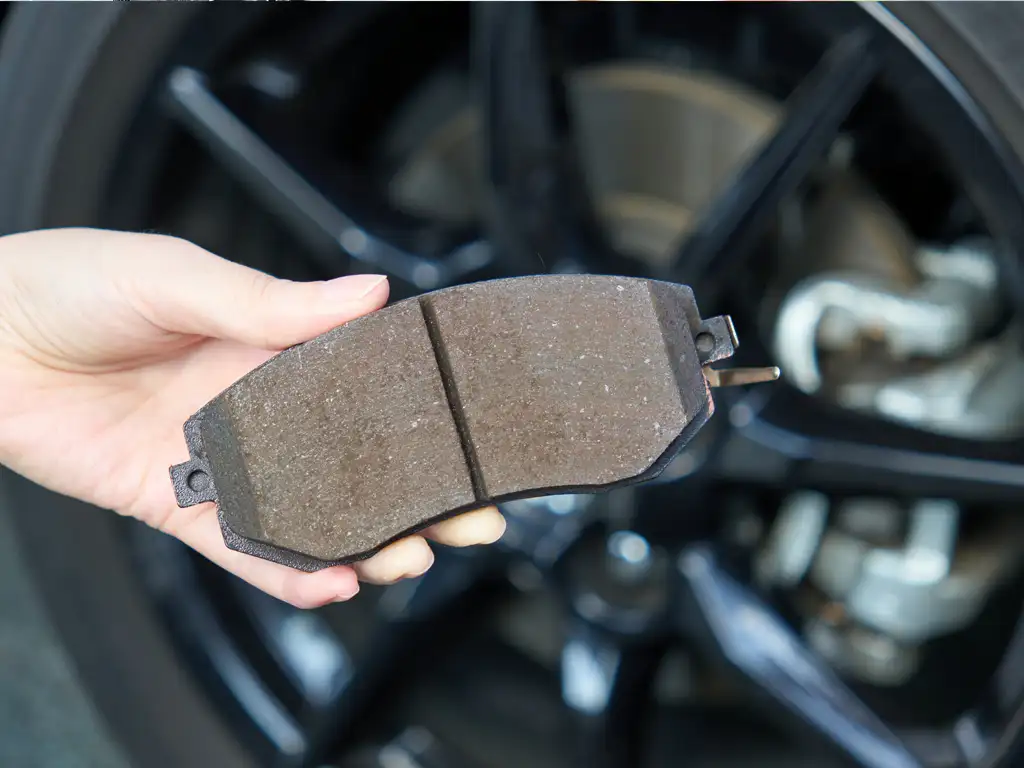How does driving style affect brake pad wear? ROTINGER Guide
Driving style has a direct impact on the wear of many car components, including brake pads. Every driver should be aware of how their driving style affects the durability and efficiency of the brake system.
In the article
Intensive braking and brake pad wear
Engine braking and brake pad wear
Fast driving is not a good idea
High-quality brake pads
Is it worth having a dynamic driving style? Or maybe engine braking and anticipating road situations are a better solution? Many drivers do not consider how, without major sacrifices and a radical change in driving technique, they can significantly extend the life of brake pads. In today’s ROTINGER guide, we will take a closer look at this issue.

Intensive braking and brake pad wear
Every hard braking causes the friction layer of the brake pads to wear out. Even a single intensive braking can result in the loss of several microns of material from the pads. Too frequent and sudden braking contributes to faster pad wear. This in turn leads to the need to replace them more often. Drivers who prefer dynamic driving with frequent use of the brakes must be prepared for higher expenses related to brake system service.
People living in mountainous areas are also in a slightly more difficult situation. Vehicles with automatic transmissions in particular somehow force the driver to use the brake more often. Descents and ascents, as well as more difficult weather conditions, mean that we use the brake pads more intensively. This has a direct impact on the rate of wear of these components. A solution that will slow down the process of pad wear is engine braking.
Engine braking and brake pad wear
Engine braking is a technique that can significantly extend the life of brake pads. It involves changing gears to slow down the vehicle without using the brakes. Modern cars, especially hybrid and electric cars, also offer the possibility of regenerative braking, which allows for the recovery of energy during deceleration. Using these techniques can significantly reduce the wear of brake pads and increase fuel efficiency.
Driving fast is not a good idea
Driving fast means having to brake more often, which leads to faster wear of brake pads. Driving at a moderate pace and maintaining an appropriate distance from other cars on the road can significantly reduce the frequency of braking. This driving style not only saves brake pads, but also reduces fuel consumption and improves overall road safety.
High-quality brake pads
For drivers who prefer a dynamic driving style, investing in high-quality brake pads and discs is essential. Sports brake pads are more resistant to high temperatures and intensive use, which translates into a longer service life. Although they are more expensive, in the long run they may prove to be more cost-effective, providing better performance and safety. However, it must be remembered that they are practically useless in normal use. Therefore, such an investment only makes sense when driving on the track or on special stages.
Driving style has a key impact on brake pad wear. Hard braking, fast driving and lack of skills in using techniques such as engine braking can lead to faster wear of this important element of the braking system. It is worth paying attention to driving techniques that can help extend the life of brake pads and improve road safety. Investing in high-quality brake components can also bring benefits in the long term.
ROTINGER brake pads designed with safety in mind! Check out the offer!
Discover ROTINGER:
- brake discs – a wide range of discs for passenger cars and light commercial vehicles
- GRAPHIT LINE brake discs – a unique, patented technology for anti-corrosion protection of brake discs
- HIGH PERFORMANCE brake discs – a special line of High Carbon class discs
- BS LINE brake discs – a wide range of discs integrated with bearings for French cars
- TUNING brake discs – the widest offer on the tuning brake disc market
- brake pads – designed with safety and durability in mind
